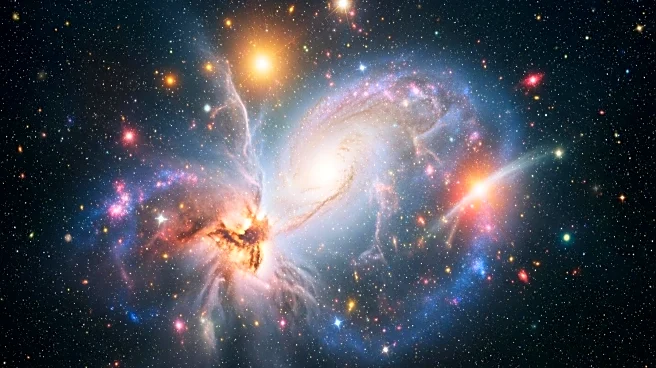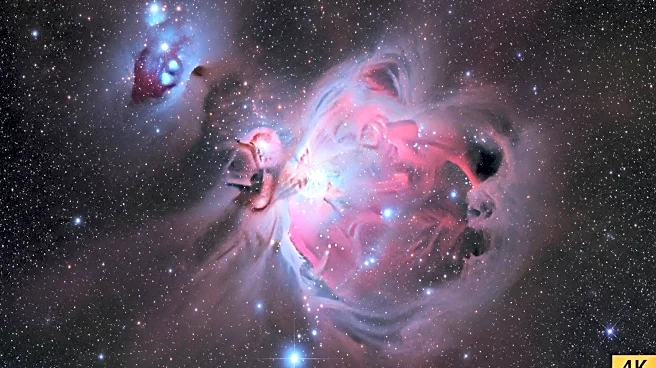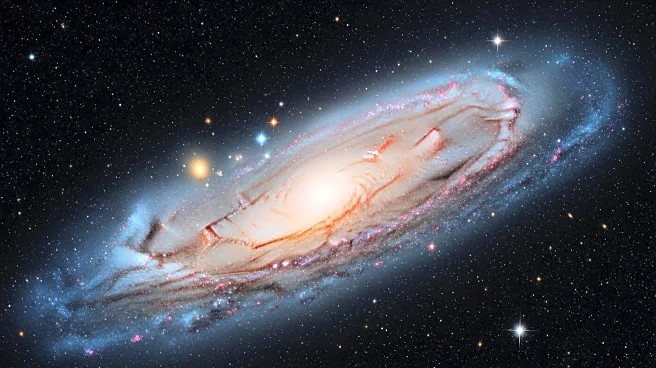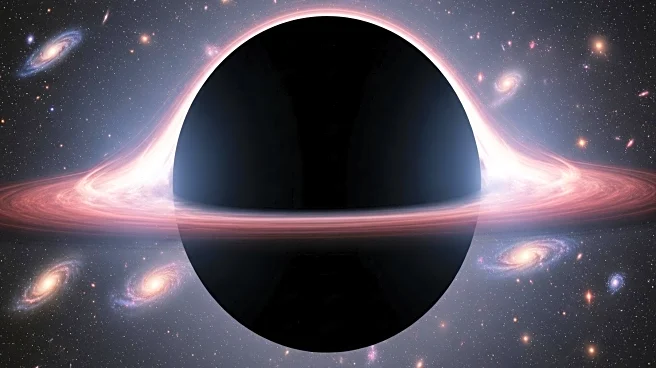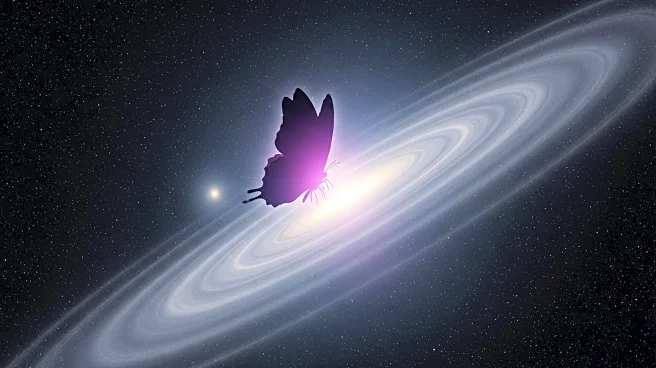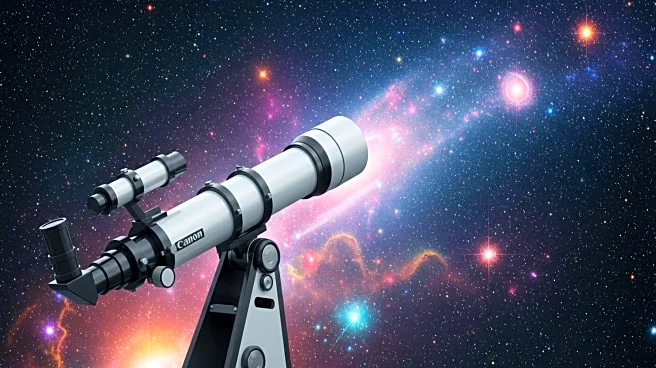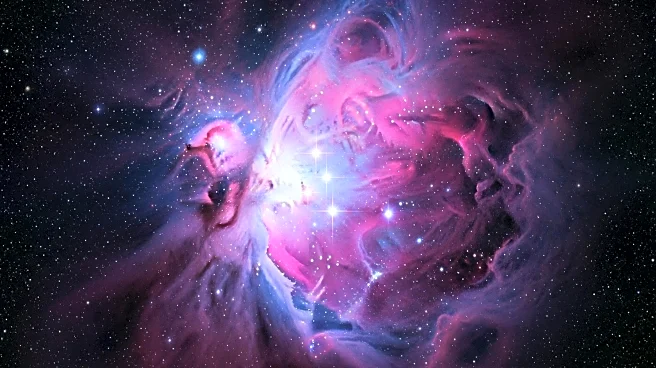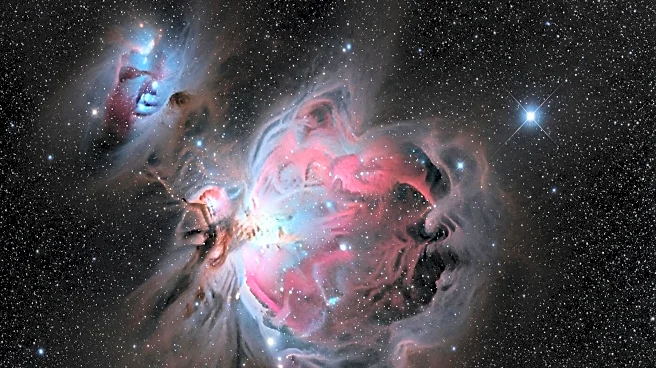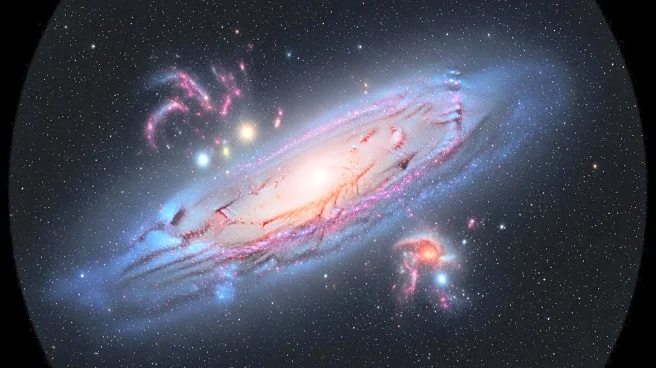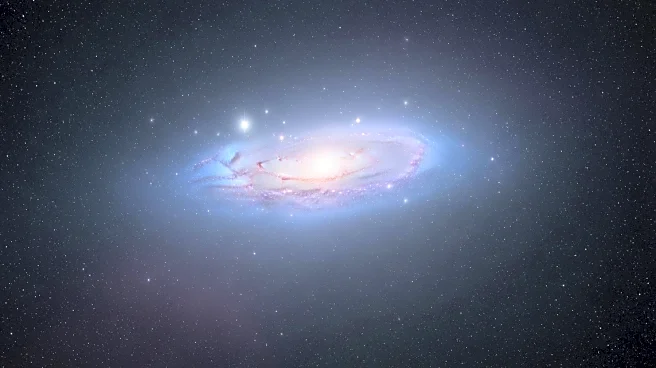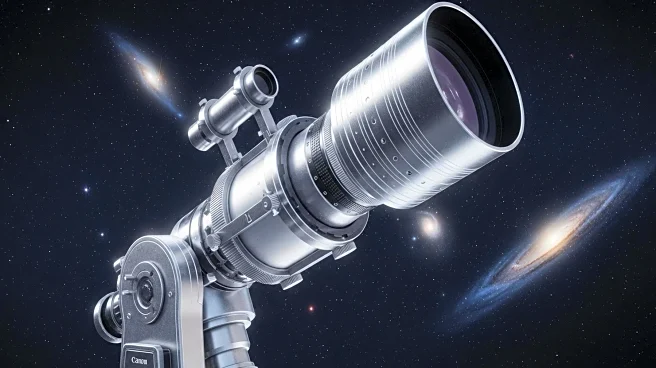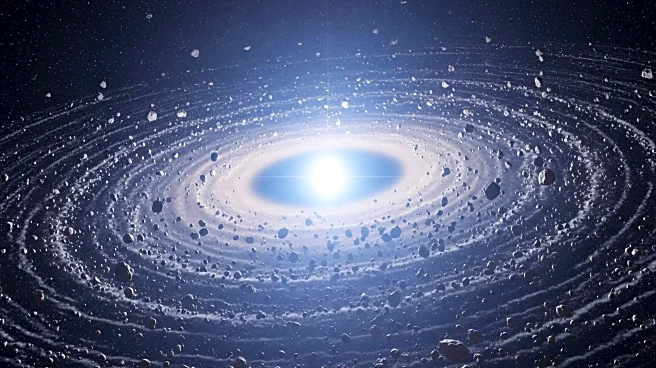What is the story about?
What's Happening?
Recent studies suggest that the first stars in the universe may not have been as uniformly massive as previously thought. Two independent studies published in 2025 indicate that collapsing gas clouds in the early universe could have formed lower-mass stars. One study utilized a new astrophysical computer simulation to model turbulence within gas clouds, leading to fragmentation into smaller, star-forming clumps. Another study demonstrated how molecular hydrogen, essential for star formation, may have formed earlier and in larger quantities than expected. These findings challenge the long-held belief that the first stars were predominantly massive and suggest that lower-mass stars may have existed in the early universe.
Why It's Important?
The discovery of lower-mass stars in the early universe has significant implications for our understanding of star formation and the evolution of galaxies. If lower-mass stars were present, they could have contributed to the chemical enrichment of the universe and the formation of the first planets. This challenges existing models of stellar evolution and suggests that the early universe was more chemically active than previously believed. The findings could lead to a reevaluation of the timeline for the formation of the first galaxies and the conditions necessary for planet formation.
What's Next?
Further research is needed to confirm the presence of lower-mass stars in the early universe. Observational astronomers will likely focus on detecting these stars, which are faint and difficult to observe. The findings could prompt new theoretical models to better understand the processes that led to the formation of stars and galaxies. Additionally, the studies may inspire future experiments and simulations to explore the role of molecular hydrogen and other chemical processes in star formation.
AI Generated Content
Do you find this article useful?
